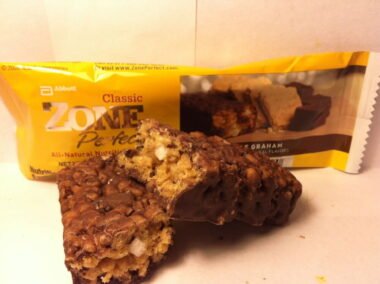- Welch’s Graham Slam PB&J was an unusual combination of grape jelly, peanut butter, and graham crackers.
- Discontinued owing to changing preferences, market competition, and manufacturing issues.
- Fans still love and remember the product.
- Its withdrawal raised discussions regarding snack food innovation and tradition vs. market developments.
- The decision underscores industry factors including brand strategy adjustments and cost-benefit calculations.
Welch’s experimented with flavor and format in snack foods. The Graham Slam PB&J typified a time when businesses combined comfort foods with novel forms. Customers recall the product as a tasty variation on peanut butter and jelly, even though it was discontinued.
The Creation of a Classic Snack
In addition to its fruit-based goods, Welch’s opted to capitalize on the peanut butter and jelly sandwich’s global appeal. Graham crackers were used to make this snackable. A portable, handy version of a famous school lunch treat was the concept.
The product used nostalgia and innovation to appeal to youngsters and adults. Two layers of peanut butter and jelly between crispy graham crackers created a multi-textured snack. This layered architecture combined the best of a sandwich with the crispiness of a baked item, revolutionizing on-the-go munching.
Innovation Meets Tradition
A Creative Take on a Classic
Creative cooking characterized the Graham Slam PB&J. It aimed to reinvent a familiar mix. What distinguishes it:
- A surprising crunch from graham crackers enhanced the richness of grape jelly and the smoothness of peanut butter.
- It was a convenient snack for busy people since it was packaged to be eaten without mess.
- Nostalgia: The product brought back memories of school lunchboxes and simpler times, forming a generational link.
The Product Lifecycle
Several steps make to the Graham Slam PB&J lifecycle:
| Phase | Description |
|---|---|
| Introduction | Launched with much fanfare, highlighting its innovative combination of flavors and textures. |
| Growth | Gained a loyal following as consumers began to appreciate its unique twist on the classic snack. |
| Maturity | Reached a peak in popularity, becoming a must-have item in several regional markets. |
| Decline & Discontinuation | Faced challenges from shifting consumer preferences and increasing competition, leading to its eventual phase-out. |
Causes of Discontinuation
Graham Slam PB&J was discontinued despite its success. This choice was influenced by internal and external influences.
Changes in consumer preferences and market trends
Consumer tastes changed. Despite nostalgia, new snack trends favored goods with less sugar, natural ingredients, and inventive packaging. Indulgent or processed items lost popularity as health-conscious options grew more popular. Like many firms, Welch’s had to balance innovation and history with changing desires.
Landscape of Competition
Snack food firms compete fiercely for store space and customer attention. As competitors launched new tastes and health-conscious goods, the Graham Slam PB&J became outdated. Cost was a major consideration when making a product with several ingredients, especially one that required to balance flavors and sensations.
Production and Supply Chain Issues
Discontinuation went beyond customer desire. Behind the scenes, production complexity was important. Managing a product’s supply chain with many components from diverse sources is difficult. The price and availability of raw ingredients and changing food safety regulations impede manufacturing. Due to these facts, many feel the choice was sensible in a tough economy.
Strategic Brand Focus Changes
Diversifying product portfolios is important for many established businesses. Companies like Welch’s must constantly assess whether items fit their long-term goals. The Graham Slam PB&J was discontinued to focus on items that met market trends and consumer expectations. Welch’s could focus more on its core products, such fruit juices and jams, which were more popular in today’s health-conscious market.
Consumer Reactions and Nostalgia
A Cult Following
Years after its termination, the Graham Slam PB&J remains popular. Fans share memories of childhood meals and the delight of biting into a sweet and crispy snack on social media. This nostalgia is profound because it recalls a period when snack foods were a comfort in a changing environment.
Nostalgia in Food Marketing
In the food sector, nostalgia is powerful. It may provoke powerful emotions and build customer relationships. Losing the Graham Slam PB&J spurred arguments about cultural loss. A snack was removed off the shelves, but for some, it signified the end of an era when manufacturers experimented with tastes in big and memorable ways.
Social Media, Fan Communities
Fan communities have helped preserve the Graham Slam PB&J. Twitter, Facebook, and specialized forums continue to host recipes for the defunct food. Re-releases or alternative items that capture the original’s enchantment are discussed. These communities have praised the product’s innovation and effect on the snack food business.
Broader Snack Food Industry Impact
Lessons from Discontinuation
Graham Slam PB&J illustrates food business obstacles and opportunity. Innovation and tradition are balanced in this case study. Some essential lessons:
- Even innovative goods must adapt to stay relevant. Companies must be flexible to meet market and customer demands.
- Consumer sentiment is dynamic: What appeals to customers now may not appeal to them tomorrow. Monitoring changing tastes is crucial.
- Operational Challenges Matter: All successful products include sophisticated production, supply chain management, and quality control. Managing these issues is crucial for long-term success.
- The Power of Nostalgia: Brands can sell using nostalgia, but they must innovate to reach new customers.

Other discontinued product comparisons
This is not the first Graham Slam PB&J withdrawal. Many popular food and beverage items have suffered similar ends. Comparing these examples adds context:
| Product | Key Feature | Reason for Discontinuation |
|---|---|---|
| Cereal Innovations | Bold, limited-edition flavors | Market saturation and changing breakfast habits |
| Snack Bites | Novel ingredient combinations | Supply chain issues and evolving taste preferences |
| Retro Sodas | Classic recipes with modern twists | Competition from artisanal and craft beverages |
These instances show that market development may destroy even the most inventive and nostalgic items.
Nostalgic Snacks Future
Comeback Potential
Given the appeal of nostalgic items, may the Graham Slam PB&J return? Several circumstances may favor a re-release, albeit there is no official word:
- Consumer need: The product’s loyal fan base suggests a latent need for its comeback.
- Market Trends: With the rise of retro and vintage branding in food marketing, the product might be reintroduced with new twists like increased nutritional profiles or eco-friendly packaging.
- Limited Editions: Some firms have successfully resurrected discontinued items as limited-time offerings, emphasizing urgency and exclusivity. Graham Slam PB&Js may benefit from a similar approach.
Modern Snack Food Innovations
Snack food is undergoing significant transition due to culinary technology and customer preferences. Companies are emphasizing:
- Health & Wellness: Making products with natural ingredients, decreased sugars, and nutritional advantages.
- Investment in eco-friendly packaging and sustainable sourcing.
- Personalization: Offering snack alternatives to suit individual tastes and diets.
These trends differ from the Graham Slam PB&J paradigm, but they show how classic items can be reinterpreted for current consumers.
Reflecting on Brand Evolution
Market realities and strategic shifts
Welch’s strategic adjustment led to the Graham Slam PB&J’s discontinuation. Every product must justify its existence—not just aesthetics, but profitability and alignment with the company’s long-term vision—in today’s competitive market. Welch’s concentration on fruit-based and health-oriented goods shows how firms must condense their portfolios to compete.
Blending Tradition and Innovation
The Graham Slam PB&J shows how tradition and innovation must coexist. The product was discontinued, yet its impact on snack food remains. It defied snack definitions and opened the path for nostalgic-modern developments.
Final Thoughts
Welch’s Graham Slam PB&J features innovation, nostalgia, and strategic change. Its termination ended a unique product line but illustrates food manufacturing and market developments. Many will always remember the product as a moment when originality and tradition clashed, inspiring snack connoisseurs to discuss it.
While the Graham Slam PB&J may never return, its effect on the industry is unmistakable. It symbolizes a bygone period and reminds us that bold ideas may leave lasting memories.
What was Welch’s Graham Slam PB&J?
The snack blended peanut butter and grape jelly with graham crackers for a portable spin on the PB&J sandwich.
The product was discontinued—why?
The discontinuance was caused by changing customer tastes, market competition, and the challenges of sustaining a multi-ingredient product in a quickly changing economic and operational environment.
Is the product popular upon launch?
Due to its novel take on a classic taste combination, nostalgic adults and younger customers searching for a snack immediately became fans.
Any intentions to revive the Graham Slam PB&J?
No formal return announcement has been made, despite fan conversations and sentimental calls. If relaunched, a limited edition or upgraded version may be warmly accepted due of its large fan following.
The snack affected the industry how?
The snack combined recognizable components in a creative way, challenging snack forms. It showed that innovation—even with traditional flavors—could attract consumers and motivate other firms to innovate.
What can its end teach us?
The major lessons are to adapt to customer trends, streamline product lines for operational efficiency, and blend nostalgia with present market realities.
What’s customer reaction since discontinuation?
On social media and in fan forums, many consumers recall the Graham Slam PB&J’s distinctive flavors and textures with bittersweet nostalgia.
Can nostalgic items like this be revived?
Retro items can make a comeback if firms combine traditional flavor with new health trends and sustainable practices. Strong consumer enthusiasm may drive limited editions or reinvented versions of resurrection.
This detailed look into Welch’s Graham Slam PB&J explores the product’s history and cultural significance as well as snack food market developments. Industry experts and sentimental fans alike find its legacy a fascinating example of blending innovation and tradition.




